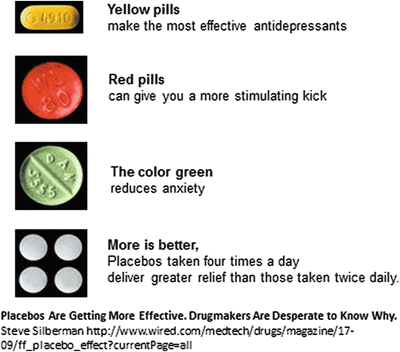Contents
Pharmaceutical companies have a problem – new painkillers do not pass clinical trials. Careful analysis showed that real drugs could not demonstrate their advantage over the “dummy”.
It is known that the placebo effect has become stronger over time in trials of antidepressants and antipsychotic drugs. Canadian researchers decided to find out how pronounced this effect is when testing painkillers. To do this, they analyzed the results of 84 clinical trials published between 1990 and 2013 that tested drugs for the treatment of neuropathic pain.
In these trials, patients self-rated how much pain they experienced. The effect of the drugs remained roughly the same over a period of 23 years, but the analgesic effect of the placebo “pacifiers” with which these drugs are compared has become stronger.
Pass the tests
- Can you be called an “emotional sissy”?
- Are you an optimist or a pessimist?
For example, in 1996, drugs were about 27% more effective in controlling pain than placebo. In 2013, this gap narrowed to 9%. It is noteworthy that this effect was observed only in studies conducted in the United States. In Europe, Asia and other continents, the magnitude of the placebo effect has not changed much over time. Not surprisingly, over the past 10 years, more than 90% of new drugs for the treatment of neuropathic pain and pain caused by cancer have failed to demonstrate sufficient efficacy in clinical trials.
But why are such phenomena observed only in the United States? One possible explanation is that direct advertising of drugs to patients is only allowed in the US and New Zealand. Perhaps because of these advertisements, people expect a greater effect from drugs, which leads to a more pronounced placebo effect. However, the results of Canadian scientists say otherwise. “Our data show that the larger and longer clinical trials, the more pronounced the placebo effect,” said Jeffrey Mogil, lead author of the study, head of the Pain Genetics Laboratory at McGill University in Montreal, Canada.
Read more:
- Is pain our social glue?
Large, lengthy, and expensive US trials look more impressive and impactful from the point of view of the patients involved, which may indirectly raise those participants’ expectations of drug effects.
The results obtained by Canadian scientists call into question the basic principle of placebo-controlled studies, which is that the effectiveness of a drug can be assessed by comparing it with the effect of a placebo (“pacifier” that does not contain any active substance). This implies that the placebo effect and the effect of the drug “add up” in those who take the real drug. However, Jeffrey Mogil’s group found that even though the placebo effect has gotten stronger over the years, the effectiveness of the drugs hasn’t improved.
It turns out that the placebo effect and the drug effect do not always “add up”. Jeffrey Mogil believes that this is partly explained by the fact that these effects work through the same mechanisms – in particular, by facilitating the release of endorphins (which act as natural painkillers) in the brain. If this is the case, it is possible that the increased placebo effect is masking the true effect of the drugs. “Many experts believe that drugs that don’t go into clinical trials actually work, they just don’t show that the trials show it,” says Jeffrey Mogil. He believes that it is necessary to study in more detail the factors that enhance the analgesic effect of placebo in American studies, perhaps some of them can be used to treat patients.
Подробнее см. А. Tuttle et al. «Increasing placebo responses over time in U.S. clinical trials of neuropathic pain», Pain, August 2015.










